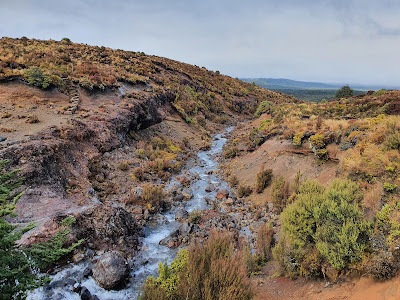Just when you're thinking "wow, I haven't read a post about Herepai for a while" here comes another entry in which Cody and I plod on up to that hut.
This time however, there's at least a good reason for it: somehow when lazing around the internet, I stumbled across a picture that made me think "hey that looks like a less shit version of Herepai Hut." As it turned out, that is exactly what it was.
Naturally, we had to go check out what had happened to old faithful.
Huey's benevolence smiled upon us as we started the tramp under slightly cloudy skies on a crisp winters day.
An area we once came upon as a fresh landslide was now covered in young mānuka shrubs.
The track meanders pleasantly upstream, eventually arriving at a large Forest Service swing bridge.
From the bridge, the track climbs steeply over many tree-root staircases. The going is slow for those of us of less-than-desirable fitness, and even for the fit amongst us the gnarled rooty track bed requires attention to avoid falling and looking like a fool.
Eventually we reached the top of the ridge and the turn-off to Herepai Hut. The less said about the time it took us to get there the better.
After taking the Herepai-bound right branch at the junction, the track continues along a somewhat soggy ridge before a brief climb just before the hut is reached.
Upon arrival, the hut looked noticeably nicer, with a fresh coat of paint and new flashings on its corrugated iron walls. The roof and front deck and have also been replaced and a woodshed constructed.
Inside, the walls have ceiling have been re-lined and painted. The original rafters, once covered with a sheet metal ceiling are now exposed in all their late 70s/early 80s glory. Overall it's now a lot more light and inviting inside now.
And although it's the same old fire, we managed to get it going well enough for the temperature to reach almost cozy levels.
Heading back down to the carpark was much less exhausting than coming up and we somehow managed to avoid much of the knee pain this descent is known for.
Huey was less benevolent on the way out, and persistent rain set in part way down. Luckily we were on the right side of 'being-rained-on-enough-to-not-be-fun-anymore' by the time we reached the car.
The renovation of Herepai Hut was carried out by volunteers supported by the Backcountry Trust and the Tararua Aorangi Huts Comittee.
Vaguely Dangerous Wilderness:


























































































